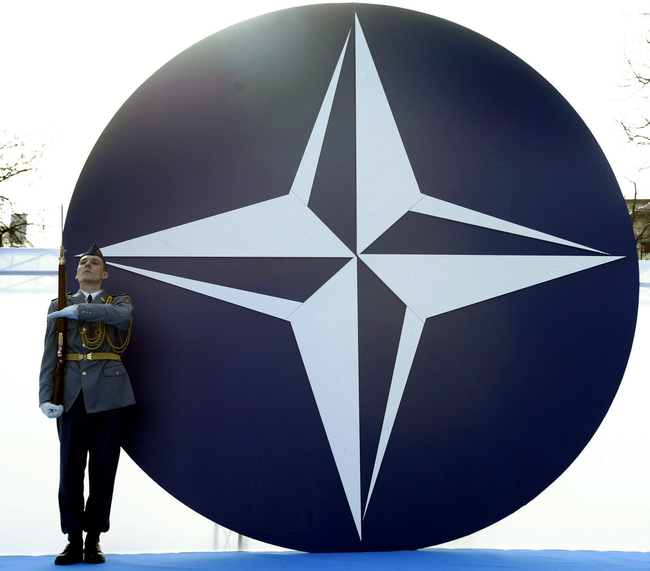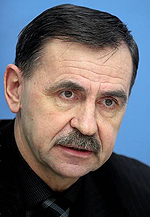NATO response to Russian extremism
Expert says NATO should adopt regional deterrence strategy re Russia
NATO appears to have started seriously considering ways to confront the threats posed by Russia’s revanchist policy in regard to the Alliance’s neighbors and member countries. Air Force Gen. Philip M. Breedlove, NATO’s Supreme Allied Commander for Europe and Commander of U.S. European Command, said at the Bruegel Institution in Brussels, September 10, that the conflict in Ukraine and the annexation of Crimea have caused essential changes in NATO’s military potential. He stressed that Russia’s adventurism and extremism are a threat that comes from the south, that Russia is trying to take advantage of the gaps between NATO countries and international organizations, and that these gaps must be bridged forthwith. He added that in the past several decades NATO has been too busy building partnership relationships with the Russian Federation to pay enough attention to the possible threat from that country.
Gen. Breedlove believes that NATO should respond to Russia’s actions in the east of Ukraine and the advance of Islamic extremism by strengthening its rapid-response force, that this force was organized as part of the collective defense framework, but that not enough importance was attached to it when trying to practice partnership with Russia. This year the situation has changed and the NATO Response Force (NRF) is now enhanced by the Very High Readiness Joint Task Force (VJTF). NATO command, among other things, has strengthened its military presence on the eastern borders and taken steps to upgrade exchanges of intelligence on Russia among the NATO member states and to form its own multinational intelligence service. NATO is reinforcing its naval groups, setting up a multinational command headquarters in Poland.
COMMENTARY
Hryhorii PEREPELYTSIA, Doctor of Political Sciences, conflict researcher, professor at Taras Shevchenko National University, Kyiv:
 “NATO decision-making procedures are time-consuming. They start by collecting and deliberating various proposals and then proceed to make decisions. Revising [a policy or strategy] takes even longer. After signing the Founding Act on Mutual Relations, Cooperation and Security with Russia, a consensus on the world order (established after the end of the Cold War) was reached. Prior to Russia’s aggression against Ukraine, NATO treated Russia’s interests in our country proceeding from the principles of strategic partnership, so the Alliance found itself hard put to revise that strategy to meet essentially different challenges, something NATO was reluctant to recognize. Also, after NATO got involved in stabilizing the situation in Afghanistan, the Alliance started transforming from a military alliance into an organization meant to help ensure a world security policy. This damaged NATO strategic planning as an essential element of national defense planning for each member country in the first place. Second, defense matters were now minor issues compared to matters pertaining to international diplomacy, including piracy off the coast of Somalia in the Gulf of Aden and the struggle against Mediterranean terrorism. It was then NATO global security objectives and resources aimed at meeting minor or even assumed military threats started scattering, forgetting practically all about the defense projects.
“NATO decision-making procedures are time-consuming. They start by collecting and deliberating various proposals and then proceed to make decisions. Revising [a policy or strategy] takes even longer. After signing the Founding Act on Mutual Relations, Cooperation and Security with Russia, a consensus on the world order (established after the end of the Cold War) was reached. Prior to Russia’s aggression against Ukraine, NATO treated Russia’s interests in our country proceeding from the principles of strategic partnership, so the Alliance found itself hard put to revise that strategy to meet essentially different challenges, something NATO was reluctant to recognize. Also, after NATO got involved in stabilizing the situation in Afghanistan, the Alliance started transforming from a military alliance into an organization meant to help ensure a world security policy. This damaged NATO strategic planning as an essential element of national defense planning for each member country in the first place. Second, defense matters were now minor issues compared to matters pertaining to international diplomacy, including piracy off the coast of Somalia in the Gulf of Aden and the struggle against Mediterranean terrorism. It was then NATO global security objectives and resources aimed at meeting minor or even assumed military threats started scattering, forgetting practically all about the defense projects.
“NATO’s first strategic mistake was reaching beyond the borders of its jurisdiction as a regional rather than global organization. The next mistake was banking on Russia. NATO ended up exposing its eastern flank to these threats, getting entangled in the Afghan conflict. At one time leading analysts – and yours truly – wrote that it was too risky to leave NATO’s eastern flank exposed to Russia, that it was high time they adopted a regional deterrence strategy. No one wanted to hear us in Brussels.
“One has to realize that NATO can’t easily change its worldviews that were established more than two decades ago. People at Allied Command Operations located at Casteu, north of the Belgian city of Mons, tasked with gathering and conducting intelligence, became aware of the threat, but NATO decisions are made by politicians, not by the military. If one analyzes all of the statements made by Secretary General Jens Stoltenberg and other NATO officials, it becomes obvious that the Alliance wants to get back to strategic partnership, that it doesn’t want to exert any pressure on Russia lest it fall apart. Gen. Philip Breedlove is the only one to reiterate that Russia poses an actual military threat [to the West]. He is fully aware of that threat as NATO’s Supreme Allied Commander for Europe. Too bad NATO’s political establishment is made up of politicians raised after the end of the Cold War. They simply don’t know what a military threat is all about; they are used to treating the military as a peacekeeper. They don’t understand the role of military force in international politics. It is hard for them to discard stereotypes.
“In fact, last year’s NATO summit in Newport, Wales, ended up stating that the Alliance is supporting Ukraine, but all decisions relating to actual aid will be made by national governments. NATO practically avoided making its stand in the matter clear, and even worse so, working out a strategy. It has taken NATO almost two years to revise the new geostrategic situation in Europe. Now the point in question is not Afghanistan (no actual threat there) but Russia that has become a clear and present danger. What makes it worse, NATO has no modern infrastructure on its eastern flank. What its post-Soviet member countries have is an obsolete Soviet one, half-disassembled to boot. NATO found itself facing a serious military challenge. They had promised Russia not to build any infrastructures or deploy any troops in any member countries that used to be part of the socialist camp. And now there are Russian forces deployed very close to the NATO borders, constantly provoking military conflicts. I believe that the NATO military is fully aware of this threat, but that the politicians are still not sure, that they still believe Russia will reconsider, sooner or later, and abandon further plans of aggression against Ukraine; that Russia has to be convinced to do so; that the situation that has developed can still be resolved amicably.”
Do you think NATO’s reinforcement of the Response Force is an adequate response to what Russia is doing in the east of Ukraine?
“That reflects the consensus which is taking shape between the NATO military and politicians, between Allied Command Operations at Mons and NATO HQ in Brussels. The military is absolutely sure this won’t suffice whereas the politicians insist that there is no need to provoke Russia, that it will suffice to deploy VJTF advance units. The thing is that these units are for deterrence, not combat missions. There is a minimum amount available, absolutely not enough for effective defense. This is proof that the NATO leadership does not believe Russia will dare occupy the Baltic States or attack Poland.
“An adequate response to Russia would be a constant presence of NATO forces in the Baltic States and Poland – I mean on the eastern flank of the Alliance. And let me repeat: constant presence. So far, we’re talking deterrence forces on constant alert that can be quickly deployed. That’s not enough. These forces can deal with separate provocations. NATO believes that will suffice, assuming that Russia will never dare start a full-scale regional conflict with the Alliance. That’s the background for the NRF and VJTF projects on a rotational basis. I believe that NATO should adopt a regional deterrence strategy in regard to Russia. VJTF will suffice for deterrence, never for defense.”
Newspaper output №:
№51, (2015)Section
Topic of the Day





